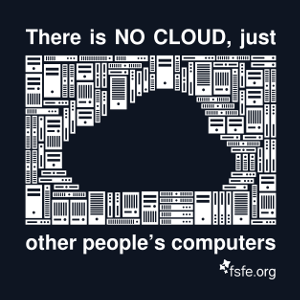By now we have (in the previous articles in this series) seen that digital data is neither immaterial nor identically reproducible. Every instance of every bit of digital data is materially unique in time and space. However despite the fact that all digital data is in principle “knowable”, since it is produced by human activities, our understanding of it suffers from several, perhaps irremediable “scalar interpretation” problems.
a. digital information, on the surface on which it is usable by human beings, is reproduced at a regular rate according to the local electricity system. Each fraction of a second instance of, say, each pixel on a screen, is, in principle different, since the materiality of the screen technology is degrading, there are current variations etc. On the macro level of observable actions, human beings do not act at anything near 50 or 60 Hz, such frequencies are epistemically alien. Therefore, in order to understand what is happening at that speed of reproduction of digital data, the representation must be simplified, “abstracted” or slowed down.
b. digital information is electronic information stored and processed through volatile memory. It must be reinstantiated at a regular rate to appear stable for anyone using or accessing it. The data is thus constantly reproduced while it is being consumed.This reproduction is carried out by automatons on the scale of chemical interaction, i.e. far below the wavelength of light perceptible by human vision. The structure of computational devices, CPUs, memory etc, is invisible and opaque to human beings and must be enlarged in order to enter into conventional epistemology. Typically this size amplification is carried out through microscopes. For very small components, microscopes which are not ‘scopes’ in the direct sense of optical devices, but tactile sensors, STM which feel around in the dark. The measurements of these sensors are transformed into numbers, charts and images, thousands of times larger than the phenomena they represent. The images which result are arbitrarily coloured and contoured to give the illusion of objects we might encounter with our unaided senses.[1]
“First only through this program do the data acquire an appearance, a surface and a depth. A form of shadow also appears in the images they show, which adds to the impression of plasticity. Such a shadow is naturally but a phantasm, it has nothing to do with the actual processes at play, how could there be shadows where there is no light?” [2]
Scientific concepts of quantum particles are appropriated or apprehended into necessarily holistic world views conditioned by personal empirical experience, informed by classical physical behaviour. In other words, though our perceptions constantly interface with the subatomic world, our empiricism is based of experience of the world in classical physics. This experience propagates holistic systems of significances, within which we situate and come to understand our contemporary conditions and find meaning.[3]
c. Again, digital data is produced and processed on the electronic i.e. subatomic scale, a realm of quantum behaviours which are alien to conventional time/space epistemology of human experience. Quantum physics behaviour must be translated to conventional physics behaviour in order for it to be “ex-plained” and “de-scribed” in human discourse. [4] This process of translation must resolve fundamental epistemological incompatibilities. Needless to say, information about quantum behaviour is profoundly disruptive to conventional notions of truth, fact and certainty. The media products we consume, however, though they are generated on the quantum level, maintain conventional truth criteria, importantly those of surplus value, profit, ROI and private property, and IP.
d. electronic information is sub-atomic, this means it instantiates valency and conductive chemical principles of the materials of the physical memory and transport structure. These materials must be of the highest chemical purity for the electronics to function as expected. Extreme metallurgical precision is required, involving enormous global infrastructure to take the ore from the ground and process it into the materials which can make up computational devices. Though the data is subatomic, the real estate, hardware, automated robots, specialized production and fabrication and assembly buildings, clean rooms, and personnel all operate on conventional (macro-)materiality subject to conventional economic pressures. This is not to mention all the intermediate forms of logistics, trucking, shipping, air cargo, rail, ports, airports, roads etc, and the electricity production grid the provisioning of which must be negotiated between governments, corporations, and various local and trans-local actors at human scale.
e. Conventional geo-politics with armies, paid militias and security details, pirates and police control massive worker populations in the mining industry where where not only the exotic essential so-called rare-earth metals required for electronics are sourced, but these human-scale manifestations of discipline and control also ensure the provisioning of the more abundant minerals such as copper and tin for integration into the electronics production chain. . There is also the feedback loop of the cyber.weapons/war industry where military research leads the digital technology innovation curve, establishing control over macro-political territory for economic gain.
Persistence of Anthropomorphism: Politics
Humans play an odd obsolescing medial role between the infinitesimal and immense of digital information. This is made more confusing by the fact that all the information we have about the information comes to us in forms (semantic) which are adapted to our epistemological predilections and habits.
This has enormous political, economic and cultural implications. The political science of democracy is a work in progress. There are and will perhaps always be powers which are exercised beyond the purview (and thereby the regulation) of a social body. In other words, government will always be inadequate to provide justice for all citizens. Unfortunately that inadequacy is opportunized by the most powerful, so it is fair to say that government always intervenes on the behalf of the powerful at the expense of all others. Under capitalism, the government always intervenes first in defence of private property. Digital technologies will never “solve”this endemic problem. In fact it could be argued that, due to the structural hegemonic “cyber-” (control) design priorities in the hardware which reproduce digital information, digital technologies cannot even be commandeered to serve the purposes of the many at the expense of an elite.
Digital technologies require enormous material resources to function. Nation-scale power grid, network cabling including submarine cables, server farms and data-centers.
In considering a nomos of the Cloud by counting the transoceanic fiber-optics also digging through the countryside, data centers buried deep in mountains near dams, the exotic minerals pulled from African rivers to make cell phones, alongside the engineered hallucinations of augmented reality, an inability to stay true to the dirt-venerating provincialism of Schmittian nomic priorities is seriously challenged. No workable distinction between ground and water, between Cloud infrastructure and Cloud interactivity as mapped across some spectrum from tangible to virtual, can survive much poking and prodding. Even so, there are nomic claims on the undetermined territory of the Cloud, as recent revelations regarding state surveillance programs and state versus state cyberwarfare make plain, for example. Even so, the residual confusion of jurisdictional divisions of land, sea, air, and cyber is itself worth mapping forensically. From its buzz and howl, perhaps alternative governmentalities for the decades that lie beyond might cohere.[5]
Even should a government be commandeered by the mass, the so-called “reconfiguration thesis” that somehow the digital infrastructure can be reappropriated to the advantage of the many, is unlikely.
“the use-value which the logistics industry produces is a set of protocols and techniques that enable firms to seek out the lowest wages anywhere in the world, and to evade the inconvenience of class struggle when it arises. In this sense, unlike other capitalist technologies, logistics is only partly about exploiting the efficiencies of machines in order to get products to market faster and more cheaply, since the main purpose of the faster and cheaper technologies is to offset the otherwise prohibitive cost of exploiting labour forces halfway around the world. The technological ensemble which logistics superintends is therefore fundamentally different than other ensembles such as the Fordist factory; it saves on labour costs by decreasing the wage, rather than increasing the productivity of labour. To put it in Marxist terms, it is absolute surplus value masquerading as relative surplus value. The use-value of logistics, for capital, is exploitation in its rawest form, and thus it is truly doubtful that logistics might form, as Toscano writes, “capitalism’s pharmakon, the cause for its pathologies (from the damaging hypertrophy of long-distance transport of commodities to the aimless sprawl of contemporary conurbation) as well as the potential domain of anti-capitalist solutions”.”[6]
The electronics production chain is over-determined by capitalist work-efficiency considerations and would have to be completely reconfigured from the bottom up to ever properly serve an emancipatory an egalitarian function. I have argued elsewhere that improved conditions at the base of the production chain would perhaps even make the production of digital technologies as we know them today impossible.[7] Contrarily, enormously creative, imaginative, inventive and innovative new forms of both mitigating general want, and caring for all according to their needs, are likely to emerge from the emancipated poor of these places.
Data is not immaterial “there is no cloud only someone else’s computer” [8]. The stack is owned physically and encircled with barbed wire and hired mercenaries and guards. You cannot go there. Unaccountable financial elites hide behind governments and play one government against each other to their advantage. Local laws are there first and foremost to protect private property. Citizens are thus still in the position described by Marx in 1868: their freedom is that of the freedom to sell their labour to capital on the market. The pittance they receive for their invaluable participation in socially necessary production is even pre-emptively expropriated by an unfair and fraudulent commercial regimes on all the socially necessary reproduction costs: food, shelter etc. The object is to monopolize people and control their behaviour, not only in the present, but as far as possible into the future, so an every increasing part of the value they produce can be appropriated.
——-
Notes
[1] The question of arbitrary selection of “relevant details” in scientific illustration is the theme of the excellent “Objectivity” Galison, P. Daston, L.: (2007) Objectivity. Zone, Brooklyn
[2] Nordmann. A. Et al. Hrsg.: (2006) Nanotechnologien im Kontext. Akademische Verlagsgesellscha , Berlin p.106
[3] Gottlieb, B. (2016) “A Political Economy of the Smallest Things” ATROPOS, New York, p. 61
[4] Excellent on this is Brigitta Falkenburg’s (2007) Particle Metaphysics. Springer, Berlin
[5] Bratton, B. “The Stack: On Software and Sovereignty” MIT Press Cambridge p.49
[6] see Jasper Bernes “Logistics, Counter-logistics and the Communist Prospect” https://endnotes.org.uk/en/jasper-bernes-logistics-counterlogistics-and-the-communist-prospect
[7]
“were programs, strategies and practices to become prevalent which could sustain other less-hegemonic conditions of production, such forms of productions will likely not be able to supply us with the same technological devices, and same techno-scientific vectors we are persistently informed are the unique guarantee of our survival as a species. We will increasingly need to rely on much more involving and troubling things, possibly somewhat less convenient but potentially even more breath-takingly fulfilling and redeeming. We will need to rely more on eachother.”





